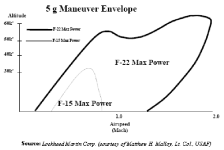Doesn't matter whether you're Rafale or MK2 or MKI, until and unless you are VLO, stealth fighters will always have first look advantage.The problem is the MKI's RCS is still too big, and every single charateristic on the J-20 is superior to the MKI in every way. Big radar and decent IRST, but will still be detected and shot at first, so the MKI will always be in the defensive. And by the time we are expected to fight each other, the MKI will be even older, and the Chinese will be inducting thier 6th gen by then.
The F-16 is slightly better but has the same problem. Only LCA Mk2 will be a better bet against stealth. Rafale of course. Base RCS has to be less than 1m2.
I'd actually like to see the Taiwanese operating the F-35B instead of Rafale. But the only way they will get them is if they announce independence. Another fear is spies leaking secrets to China.
MKI upgrade will have GaN based EW specifically to tackle this problem. J-20 or PLAAF AWACS will detect MKI first but until they have quantum or photonics based radar, MKI UPG's GaN based ECM will deny them(their GaAs/GaN based AESA FCR) weapons grade track until they are in its IRST range. That way it would be able to fight J-20.
Talking about RCS, Russians were able to reduce frontal clean RCS of Su-35S to 0.7m2-1m2 from Su-27's 6m2. So, with our new gen RAM and RAS, MKI UPG. shall have even lower RCS, so it may meet or even exceed your minimum 1m2 base RCS criteria post upgrade.
Problem for Taiwanese Air Force is not only early detection of J-20, but even if they do using IRST-21, it would be PL-15. Their AMRAAM falls way short of PL-15 as does MICA. Meteor is currently the only missile that can outrange PL-15. If you're F-35 then even AIM-120C7/8/D all work because of its own low RCS, but M-2000 and F-16 don't have that option, IMO.






 We are going to make MKI UPG. LO using even more advance RAM paints than what is available now, IMO.
We are going to make MKI UPG. LO using even more advance RAM paints than what is available now, IMO.

